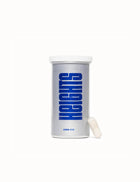
Biotic⁺

Got a discount code? Add it in the next step.
4.8/5 based on 6,169+ reviews
One of the world’s leading experts on human performance shares his insights to help you achieve flow (and happiness).

Have you ever been so consumed by your work that, hours later, you realise time flew by? Maybe you’ve called a friend, had a good chat, and realised it’s suddenly 6 am and the sun has come up. If so, you’ve experienced the flow state.
Everybody has experienced flow at some point in their lives—it’s a state of intense focus and concentration on a task, where everything else disappears.
Steven Kotler is on a quest to help people reach their peak performance. He’s a New York Times bestselling author, award-winning journalist, and the founder and executive director of the Flow Research Collective .

Flow is an optimal state of consciousness where we feel and perform at our best.
Unfortunately, your inner dialogue tends to be extra loud when you’re in a state of deep concentration, so that’s when your brain calls for backup—transient hypofrontality.
This process occurs in the prefrontal cortex. In layman’s terms, brain activity decreases in the frontal region of the brain, and quiets down the defeatist voice that lives in your head, allowing you to excel both mentally and physically.
Flow states have triggers that lead to more flow. Flow follows focus—it only shows up when all of your attention is directed at the task at hand.
That’s what triggers do, they drive attention to the present moment by triggering the release of feel-good, performance-enhancing chemicals like dopamine, serotonin, and norepinephrine. Triggers are your toolkit. Use them, and they’ll release these chemicals in your system, trick your brain into getting excited, and make you able to pay more attention to your work.
Pioneer of the concept Mihaly Csikszentmihalyi identified four triggers to help generate more flow.
Complete concentration in the present moment
Immediate feedback
Clear goals
The challenge-skills ratio (this is when the challenge you’re facing pushes your skills to the maximum).
North Carolina psychologist Keith Sawyer added to this list when he identified triggers that create group flow.
Shared goals
Close listening
Yes, and (conversations are constructive, and not aggressive)
Complete concentration
A sense of control (all members of the group get to contribute)
Blending egos (being a team player instead of an independent worker)
Equal participation
Familiarity (know your team members, but not too much that you stop challenging each other)
Constant communication
Shared group risk
Additionally, high-performing individuals like athletes and artists discovered four more.
High consequences (some kind of physical, social, or financial risk – something has to be on the line)
Deep embodiment (action and awareness merge, this is learning through doing)
Rich environment
Creativity
There are foundational peak performance basics to master before you can access flow. Before you start, both the body and mind need to be prepared. What does this look like?
Hydrate
Eat well balanced, healthy meals
Sleep for 7-8 hours a night
Have a solid social support network. Every time your brain faces a challenge, it does a threat assessment. If it senses loneliness, it shuts down by producing the hormone cortisol. The brain loves love— being surrounded by family and friends will cause it to see a challenge as something to rise towards.
Too much life pressure will block flow
Lower your tension levels by practicing daily gratitude, mindfulness practices, breathwork meditation, or doing 20-40 minutes of exercise. Do one a day to keep your nervous system in check.
THC is a tool that can negatively impact your performance by putting you in a relaxed state, but can help if you learn to work with it. Unless you warm up both your mind and body, marijuana is going to end up blocking flow.
Remember transient hypofrontality? It’s the deactivation of large swathes of the prefrontal cortex. You can induce this process through exercise. This will tire the brain out, and quiet down negative self-talk going on up there .
Don't forget—use sativa instead of indica. Sativa has the feel-good, performance-enhancing chemical dopamine, whereas indica gives you more of a body high and tends to knock you out.
For the first 2 weeks start with taking a quarter hit, and work for 40 minutes. Repeat once more.
Once you've adjusted, begin taking half a hit, and work for 40 minutes. Repeat once more.
This way you can build your tolerance and be productive while high.
Steven Kotler's 'Stealing Fire: How Silicon Valley the Navy SEALs and Maverick Scientists Are Revolutionizing the Way We Live and Work'
Steven Kotler's 'The Rise of Superman'
Steven Kotler's 'West of Jesus: Surfing Science and the Origins of Belief'
Identify what's standing between you and flow using this assessment
The average brain health score is 51/100. Take our 3-minute quiz to learn how yours measures up and how to boost it.